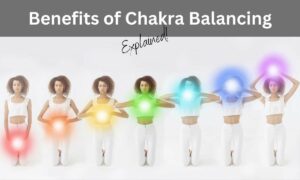If you are testing the waters of transcendental meditation, questions surrounding what the mantra is for this silent form of meditation are inevitable.
The mantra is a critical component in the actual learning process of transcendental meditation, and today I am sharing the answers with you.
The mantra is a meaningless sound whose effects are well-known in transcendental meditation or TM.
Mantras for TM are unique and very individualistic for every practitioner as they are chosen based on a trade secret formula by the yogi or the guru.
The mantra for TM is usually one-word, unlike other forms of meditation that use phrases and visualizations.
Transcendental meditation and the use of its mantras were initiated by Maharishi Mahesh Yogi in the 1950s and are passed on by fully trained TM gurus.
It is, therefore, of supreme importance that you learn TM from trained teachers so you can practice it the right way.
I will cover the importance of TM mantras and how they are chosen for each individual in the following sections.
Why is the transcendental meditation mantra special?
The mantra for transcendental meditation is unique and special for every person as it is based on the criteria of neurophysiological specificity.
The special words are chosen based on the practitioners’ age and sex.
According to Maharishi, the mantras for TM are highly secret words associated with Hindu deities’ names.
It is because the mantras of personal gods fetch their divine grace to the TM practitioner.
TM mantras are known for their transcending powers and their healing effects on the mind and the body.
Recommended: Is Meditation Good for Athletes? Solved!

How transcendental meditation mantras are chosen?
As highlighted above, a fully trained teacher chooses TM mantras specifically for one person.
In accordance with Maharishi’s teachings, TM mantras are chosen for a particular practitioner during a private initiation ceremony called puja.
In addition to the words being associated with Hindu deities, the words used for TM mantras are also part of the Vedic Shankaracharya Tradition.
This ancient tradition from India has preserved the sounds of the special words but also has a system of rules that allows the words to be assigned to each individual.
For the initiation ceremony, would-be practitioners of TM are asked to bring a new handkerchief, fresh fruits, and flowers, which are offered to Maharishi’s deceased master.
The puja takes place in a candle-lit room filled with burning incense in accordance with the TM doctrine.
During the puja for receiving the transcendental meditation, the teacher or the guru encourages the student or the TM practitioner to bow down before the photo of the dead Maharishi’s spiritual teacher.
The initiation ceremony for transcendental meditation practitioners is in accordance with the TM doctrine and is said to protect the teaching.
After the mantra is chosen for the TM practitioner, teachers warn them not to reveal it as it will weaken the process of meditation and can lead to the destructiveness of the teaching.
In addition to the method mentioned above, the mantra for transcendental meditation is also chosen by other methods based on the teacher’s training.
Importance of initiation ceremony for a transcendental meditation mantra
The puja or the initiation ceremony for receiving the mantra for transcendental meditation is very important for the practitioner.
Several programs online and offline proclaim they use the TM doctrine for the mantras, but the only right way to receive the mantra right way is through an initiation ceremony under the guidance of a trained teacher.
Below are the reasons why this rite of passage is important for every transcendental meditation practitioner.
It is the right way to receive a correct mantra
As I have already mentioned, the mantra for transcendental meditation is based on your age and sex and is, therefore, unique to your person.
During the puja led by the trained teacher, nothing is added or subtracted from the TM doctrine so that the students receive the perfect mantra for the meditation and spiritual journey.
TM mantras are not just handed out between friends or even spiritual practitioners.
The mantra for transcendental meditation and the procedures for passing them to a student is carried out by a trained teacher who has undergone several months of intensive training.
This is also, why TM teachers ask their students not to reveal their secret mantra or the procedure during the ceremony to anyone.
You learn how to use the mantra correctly
Transcendental meditation is different from other types of meditation that are popular among different types of practitioners.
In TM, practitioners rely on using a silent sound so that your mind achieves a perfect state of stillness, which a trained teacher can teach during the initiation ceremony.
Regardless of the claims, it is best not to rely on online platforms to receive transcendental meditation mantras.
Receive the teacher’s support
When you undergo an initiation ceremony for the TM mantra, the teacher becomes a lifetime of support in your spiritual journey.
It can include helping you correctly interpret the experiences from the mantra and the meditation, offer correction when you deviate from the practice, and checking in with your progress.
The right support and guidance from a trained teacher in transcendental meditation is a matchless way to help your growth.
Qualities of transcendental meditation mantra
Mantras for transcendental meditation come from Sanskrit sounds, which closely resemble the human imitation of natural vibrations of the unified field.
For the uninitiated, the unified field theory, according to modern science, is the field that ties nature’s four fundamental forces and is the silent source of all creation.
When it comes to meditation, yogis identify the unified field as the Self, which is the field of Pure Consciousness.
Therefore, the mantra for transcendental meditation has six main sounds, which are:
- E
- Ai
- Shiri
- Hiri
- Kiri
- Sham
In addition, transcendental meditation mantras also have five possible endings:
- M
- N
- Ng
- Nga
- Ma
The six root sounds combine with the five ending sounds make up the mantra for transcendental meditation.
TM mantras have two common qualities regardless of the method of choosing them These are:
- Vibration with a resonance: Every TM mantra has its source in the primordial hum of Om. It is close to the mind’s silent level, allowing it to fade into blissful calmness.
This quality of the mantra settles the mind towards complete silence, which is one of the goals of transcendental meditation.
- Meaningless sound: Another quality of the transcendental meditation mantra is that it has no specific meaning.
It is because a mantra with meaning has the potential to keep you thinking about the word.
When you keep thinking about the meaning of the mantra, it does not allow your mind to transcend beyond that level.
Why do transcendental meditation teachers ask students to keep their mantra a secret?
Beginners in the journey of transcendental meditation often struggle to understand why their teachers ask them not to reveal their mantras.
It is completely natural to ask this question, and I will explain the answer to why secrecy for a TM mantra is necessary for you and the practice.
It adds to the mantra’s value
The mantra for transcendental meditation is very personal to each person.
It is the very vehicle with which you attain a stillness of the mind so you can enjoy silence and peace.
When you use the TM mantra correctly, it becomes a solace and trusted tool that you can rely on.
So keeping the mantra a secret while practicing transcendental meditation makes it powerful and valuable to you.
It preserves the mantra effects
Transcendental meditation mantras are known for their healing and calming effects on the mind and the body.
When you chant out your TM mantra loudly or pass it on to another person, it brings the mantra out, meaning it reverses the natural direction, thereby rendering it valueless.
There is a reason why the mantra for transcendental meditation is chosen for you by a trained teacher in a private initiation ceremony.
If the teacher wanted you to share your TM mantra with everyone, the initiation ceremony would not have been necessary.
TM mantras work in the context
Trained teachers in transcendental meditation give specific instructions to their students when choosing the mantra during the puja.
These instructions related to the use of the TM mantra are simple but effective for the practitioner.
This means that the TM mantra chanted or spoken out of context by another person will not work.
So it actually makes no sense to abuse the transcendental meditation mantra by using it in the wrong context.
It preserves the right practice
In addition to the mantra, TM teachers also encourage their students not to reveal the way in which it was given to them during the puja.
This is to benefit the practitioner from getting the full effects of the mantra and preserve the correct practice.
Trained teachers of transcendental meditation asking the students not to reveal the mantra and procedures also ensure that everyone receives the full and correct instructions and preserves the TM practice’s purity as Maharishi instructed



